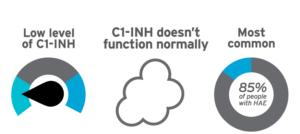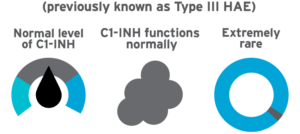 The rarity of Hereditary angioedema (HAE), diversity of its affected population, and the overlap in symptoms with other more common diseases, such as allergic angioedema and appendicitis, make diagnosing HAE challenging and an HAE diagnosis may be delayed. Skin symptoms are often misdiagnosed as allergic angioedema. Abdominal symptoms can be misdiagnosed as appendicitis. Awareness of HAE has increased in recent years; however, patients continue to experience misdiagnoses.9 Understanding and recording the patterns of your symptoms will help your doctor make a proper diagnosis. Tell your doctor about any family history of HAE.
The rarity of Hereditary angioedema (HAE), diversity of its affected population, and the overlap in symptoms with other more common diseases, such as allergic angioedema and appendicitis, make diagnosing HAE challenging and an HAE diagnosis may be delayed. Skin symptoms are often misdiagnosed as allergic angioedema. Abdominal symptoms can be misdiagnosed as appendicitis. Awareness of HAE has increased in recent years; however, patients continue to experience misdiagnoses.9 Understanding and recording the patterns of your symptoms will help your doctor make a proper diagnosis. Tell your doctor about any family history of HAE.
Your doctor may suspect you have HAE when traditional treatments for swelling don’t work, you have a positive family history, and you have a history of recurrent angioedema attacks.8 Your doctor may order blood tests to support a diagnosis of HAE Type I or Type II. Your blood will be tested for:
- C1-INH quantitative to count the number of C1-INH proteins in the blood
- C1-INH function to measure how well the protein is working
- C4—C4 protein level is typically low in confirmed cases of HAE Type I or Type II10



